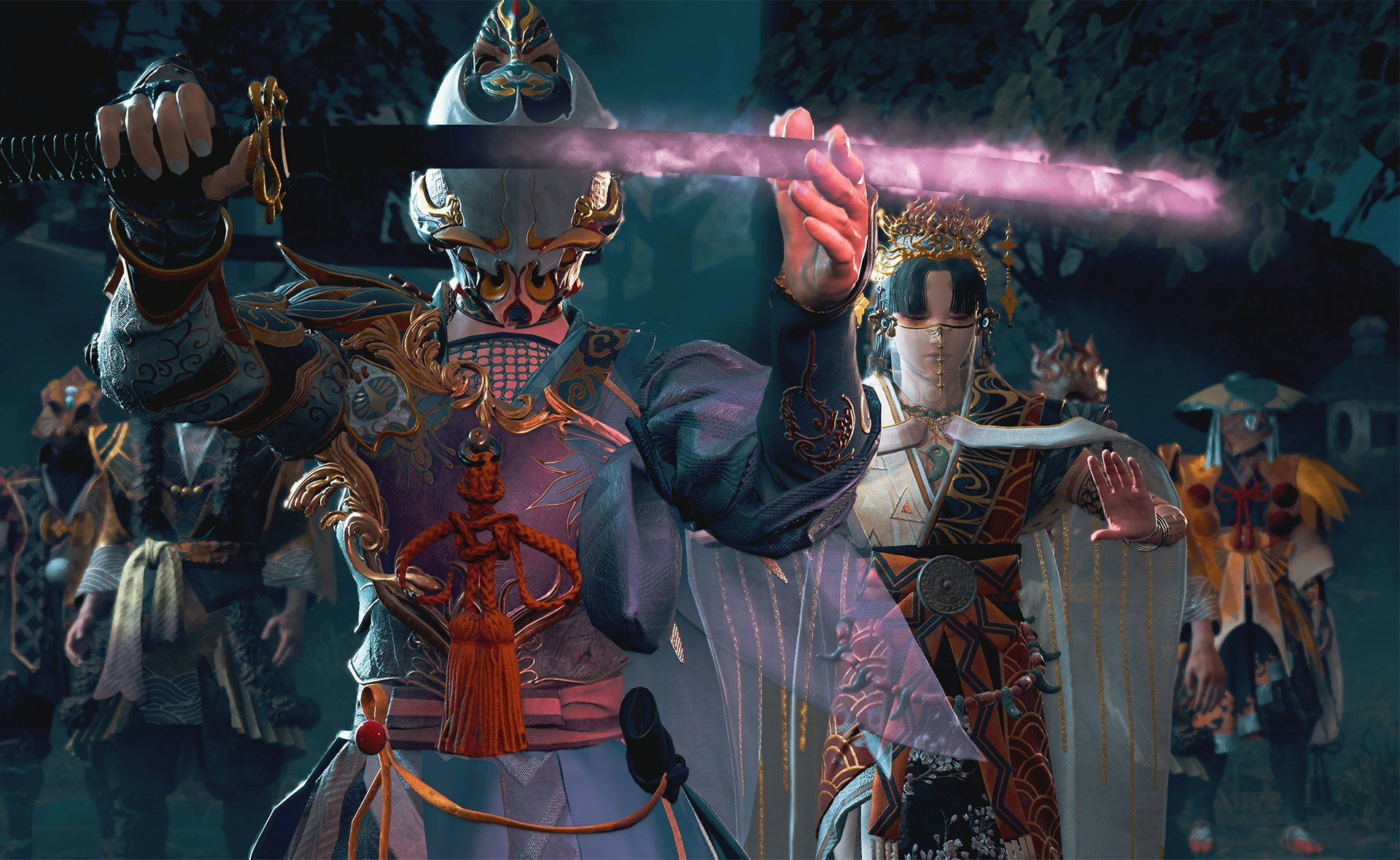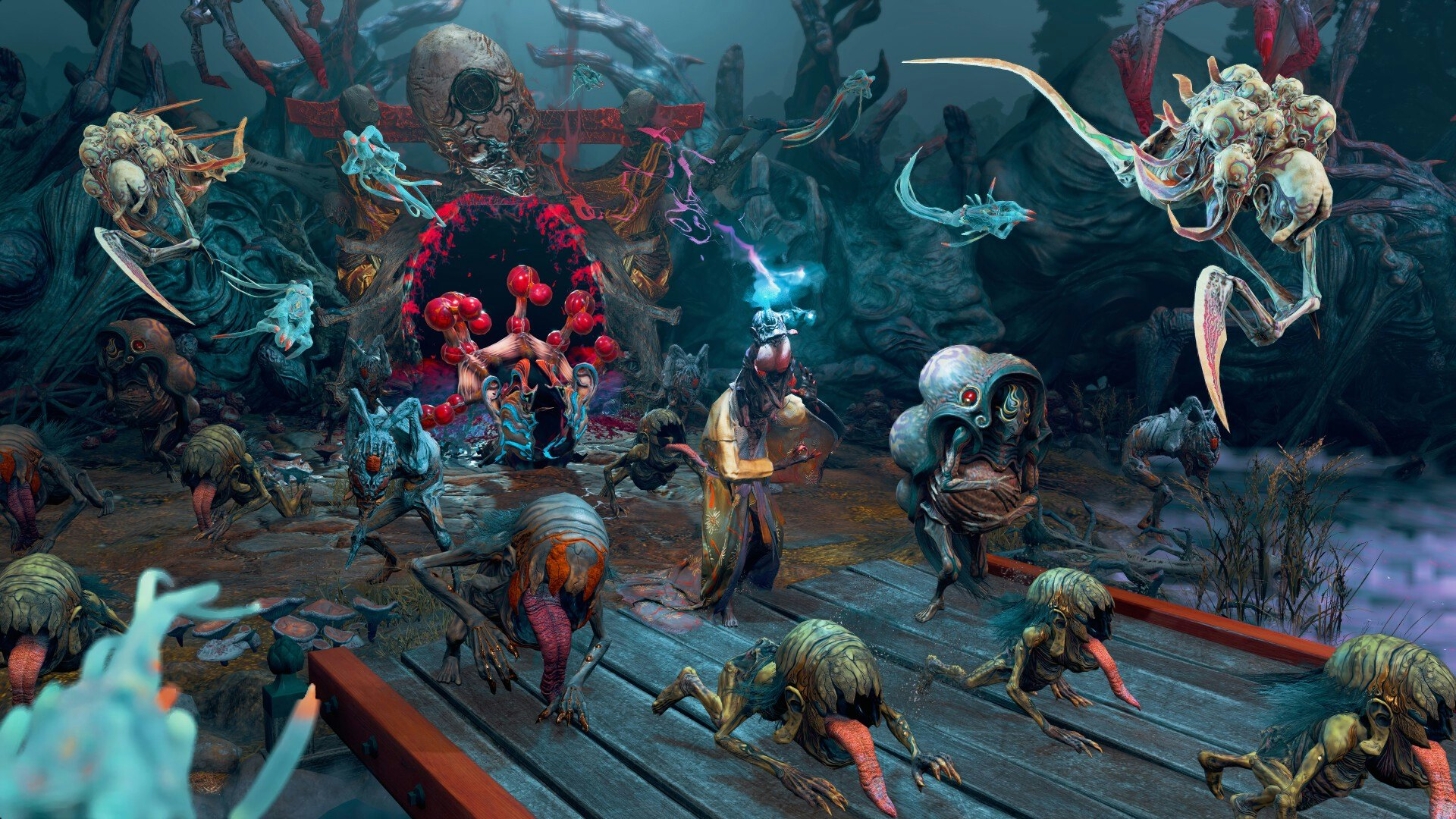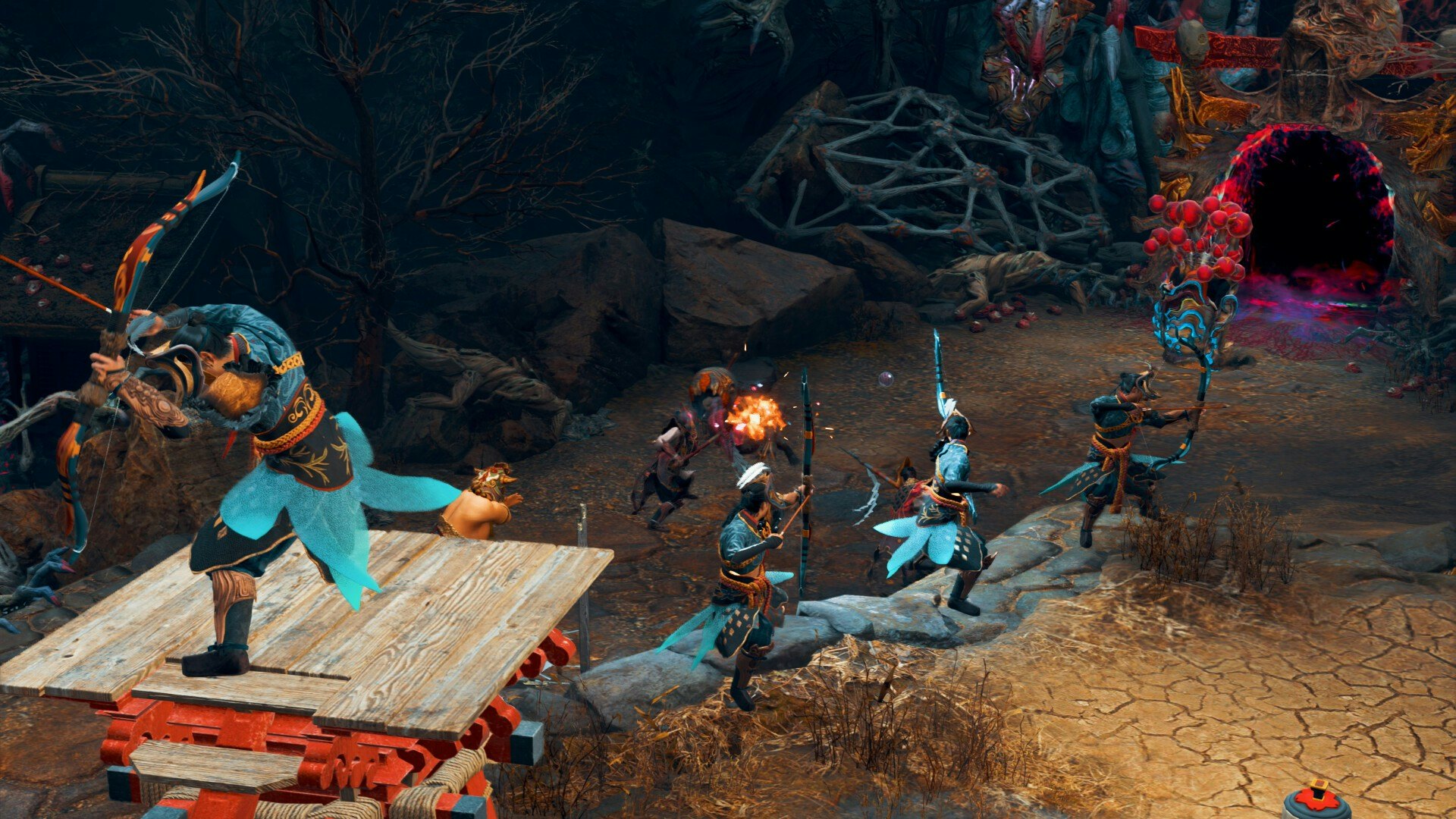
My villagers were doing their best to hold the line against the horrific misformed humanoid creatures that spewed from the miasmic portal, but they were quickly losing ground, and I couldn’t be everywhere at once. As I desperately tried to salvage my defenses, the gears were already turning in my head about what I did wrong and what new strategies I could try next.
Kunitsu-Gami: Path of the Goddess is a perplexing, soulful, and thrilling combination of genres. Its combination of tower defense and hack-and-slash sounds good on paper, but it’s nothing short of breathtaking when its elements all come together. Capcom continues its hot streak with Kunitsu-Gami, crafting a game that simultaneously feels arcade-y and artistic. It’s utterly unlike any other game out there, and it embraces a spirit of risk and innovation you rarely see these days.
A Rich Tapestry

Kunitsu-Gami is heavily inspired by Japanese folklore and mythology and takes place entirely on the fictional Mt. Kafuku. A smattering of towns and villages dot the massive mountain, and they are all suddenly taken over by an otherworldly pollution called the Seethe. The goopy infection imprisons the mountain’s people in cocoons and spawns vicious creatures and spirits.
You play as Soh, a warrior tasked with protecting a divine maiden named Yoshiro, who can cleanse the Seethe with her dance.
Outside of the initial opening, Kunitsu-Gami takes a novel approach to its storytelling, completely lacking voiced dialogue. Instead, all of its emotion is conveyed through body language and visual details, bolstered by collectibles that do a fantastic job of fleshing out the game’s lore and world. In many ways, Kunitsu-Gami feels similar to something like Ico or The Last Guardian, honing in on the connection and relationship between Soh and Yoshiro but smartly letting the player’s interpretations color the narrative. This is a story about sacrifice and duty, but its telling depends on how you interact with the game, unfurling in different outcomes for various players. In this case, that’s very much a good thing.
The narrative is made all the more impressive by Kunitsu-Gami’s astounding art style, which is grounded in traditional Japanese artwork. Every single menu and user-interface option in the game is tied to the game’s aesthetic, given purpose in the game’s rich tapestry of art. Menus are rendered in traditional Japanese art, your equipment menu has you swapping out bits of your talismans and outfit, and you can even gift Yoshiro hyperrealistic sweets (with full descriptions of how they’re made). Everything about Kunitsu-Gami is fine-tuned to feel immersive and make you identify with the duo at its heart.
A Sound Strategy

As unique as Kunitsu-Gami’s story and aesthetic are, its gameplay systems are even more dynamic, striking a near-perfect balance between action and strategy. The story is split up into over a dozen stages, with the goal of each stage being to protect Yoshiro and guide her to the Seethe gate, so she can purify it. In order to do this, you need to use the main currency, orbs, to carve the “Spirit Path,” which Yoshiro will slowly travel down.
Stages are split into a day and night cycle: Days consist of prep work, while at night, Seethe storm out of their gates. During the day, you’ll need to explore the stage and free villagers, assign them roles, use a carpenter to build defenses, purify animals to gain healing rations, uncover treasure, and more.
The crux of Kunitsu-Gami’s strategy is its villagers, who act independently but can take orders and be placed wherever you want. There are nearly a dozen different classes to assign villagers, and you sequentially unlock these as you progress through the game. There’s a wide array of strategies in the class system — for instance, Woodcutters and Spearman are high-health, melee attackers; Archers and Marksmen are ranged but low health. Thieves can find treasure but don’t fight at night, Sumo Wrestlers have great defense and can distract enemies, and Priests can remove buffs from enemies.

There’s a wealth of strategic options, and those only increase the further you get into the game, but it’s also only half of the equation. Soh has his own attacks and combos to use, including powerful moves granted by talismans, like a fiery high-damage swipe or a barrier that negates damage for an area. Kunitsu-Gami is really a balancing act, juggling the strategic demands of commanding your villagers with taking action yourself, ultimately combining both systems to overcome each stage.
Where Kunitsu-Gami really shines, however, is in how it changes and expands on its core ideas. Across the entire experience, the game isn’t afraid to shake up its rules and systems, making you adopt wildly different strategies. In one stage, Yoshiro becomes infected by an enemy turning Soh into a spirit, meaning you have to rely entirely on villagers. In another, you’re defending a small fleet of boats from invaders, rather than moving down a path. Even further, a different level is pitch black, making you command villagers to light lanterns so you can see enemies. Time and again, Kunitsu-Gami introduces dynamic new ideas to its formula, making sure to always challenge the player. Alongside these changes, Kunitsu-Gami slowly unlocks new abilities, talismans, and skill trees for Soh, increasing your repertoire as you go.
Spread among regular stages is a series of Pikmin-esque boss battles, where you need to carefully choose roles for your villagers and take down massive unique enemies. In one, a giant toadlike creature fills the center with water, meaning you want to position ranged units at the edges and take advantage of cannons you can fire. You’re still defending Yoshiro during these battles, so taking account of offense and defense is vital. Most of these boss battles are thrilling, but there are a few that feel a little undercooked or have mechanics that are more frustrating than fun.

In between battles you can explore the villages you’ve liberated and assign villagers to rebuild them, yielding supplies or collectibles after enough time has passed. You can also replay levels to try to meet specific requirements, which can yield even more materials for upgrading villagers and Soh.
The only real flaw Kunitsu-Gami has is that the game takes a while to reveal its hand. The first few hours can feel slow and plodding, easing players into the experience for maybe a bit too long. But once the options start opening up, and stages with twists start being introduced, it’s a non-stop thrill ride until the very end.
A Classic in the Making

Kunitsu-Gami, in many ways, feels like a game from a bygone era. It’s reminiscent of one of those weird experimental PS2 titles, like Okami, that would go on to become beloved cult classics. The brilliantly inventive mishmash of strategy and action is immediately fun, but only grows more complex and delightful as the whole game progresses.
This coupled with Kunitsu-Gami’s entrancing art style and story make it one of Capcom’s best games in years, and that’s really saying something. Kunitsu-Gami’s sheer ambition blew me away, and the way the game consistently innovates upon its own formula is something other strategy titles should take notes from. No matter how you look at it, this is one you don’t want to miss.
9/10
Kunitsu-Gami: Path of the Goddess launches July 19 for PS4, PS5, Xbox One, Xbox Series X|S, and PC. Inverse reviewed the PS5 version.
INVERSE VIDEO GAME REVIEW ETHOS: Every Inverse video game review answers two questions: Is this game worth your time? Are you getting what you pay for? We have no tolerance for endless fetch quests, clunky mechanics, or bugs that dilute the experience. We care deeply about a game’s design, world-building, character arcs, and storytelling come together. Inverse will never punch down, but we aren’t afraid to punch up. We love magic and science-fiction in equal measure, and as much as we love experiencing rich stories and worlds through games, we won’t ignore the real-world context in which those games are made.







